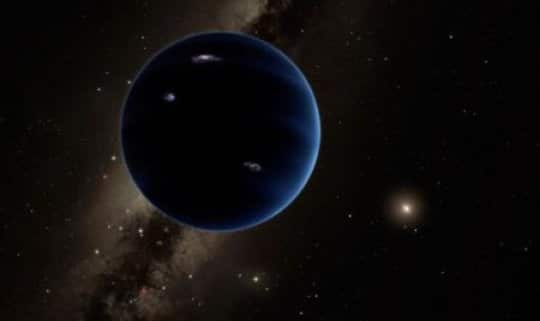Neptune has been alone at the edge of the Kuiper Belt since 2006 when Pluto’s status was downgraded to Dwarf Planet but new discovers may introduce Neptune to the new planet on the block.
This week two scientists announced they may have found a possible planet with a mass 10 times that of Earth. The discovery was made by a pair of planetary scientists, Konstantin Batygin and Mike Brown of the California Institute of Technology (Caltech) in Pasadena.

Brown, whose efforts led to Pluto’s classification of Dwarf Planet, stated “there have only been two true planets discovered since ancient times, and this would be a third.” Going on to say “all those people who are mad that Pluto is no longer a planet can be thrilled to know that there is a real planet out there still to be found. Now we can go and find this planet and make the solar system have nine planets once again.”
Though the two scientist have yet to lay eyes on the elusive planet computer models have generated simulations strongly pointing to a mysterious planet as the source of gravity pulling objects into its orbit. By identifying the effects of its gravitational field as it pulled six objects out of the expected plane of the solar system the pair was able to get a clear vision of several of the planets characteristics.

According to the scientists 4.5 billion years ago the giant planet was ejected from the planet forming region of the solar system much closer to the sun. Eventually the planet slowed with the help of gas and came to rest along a far off elliptical orbit, circling the sun once every 15, 000 years. Sadly for Neptune “Planet X’s” orbit is some 600 to 1200 AU (AU being the distance the Earth is from the Sun, approximately 150 million Kilometers). Placing it well beyond the icy worlds making up the Kuiper Belt.
Like every claim concerning a new planetary discovery there have been some questions raised to which Brown responded “If you say, ‘We have evidence for Planet X,’ almost any astronomer will say, ‘This again? These guys are clearly crazy.’ I would, too.” However this is not any normal claim, according to Brown “This is different…this time we’re right.”
Other scientists in the field support Brown and Batygin but express caution at this point “I could not imagine a bigger deal if—and of course that’s a boldface ‘if’—if it turns out to be right,” commented Gregory Laughlin, a planetary scientist at the University of California (UC), Santa Cruz, going on to say, “What’s thrilling about it is [the planet] is detectable.”

There is a good chance we could catch a glimpse of the Ninth Planet depending on where it is in its “bizarre, highly elongated orbit.” There are quiet a few telescopes that, in theory, could point towards that section of sky and spot the elusive giant. Brown and Batygin are hungry to find the planet their research has helped discover, however Brown would “be perfectly happy if someone else found it…We hope that other people are going to get inspired and start searching…It’s a pretty substantial chunk of our solar system that’s still out there to be found, which is pretty exciting.”














1 Comment